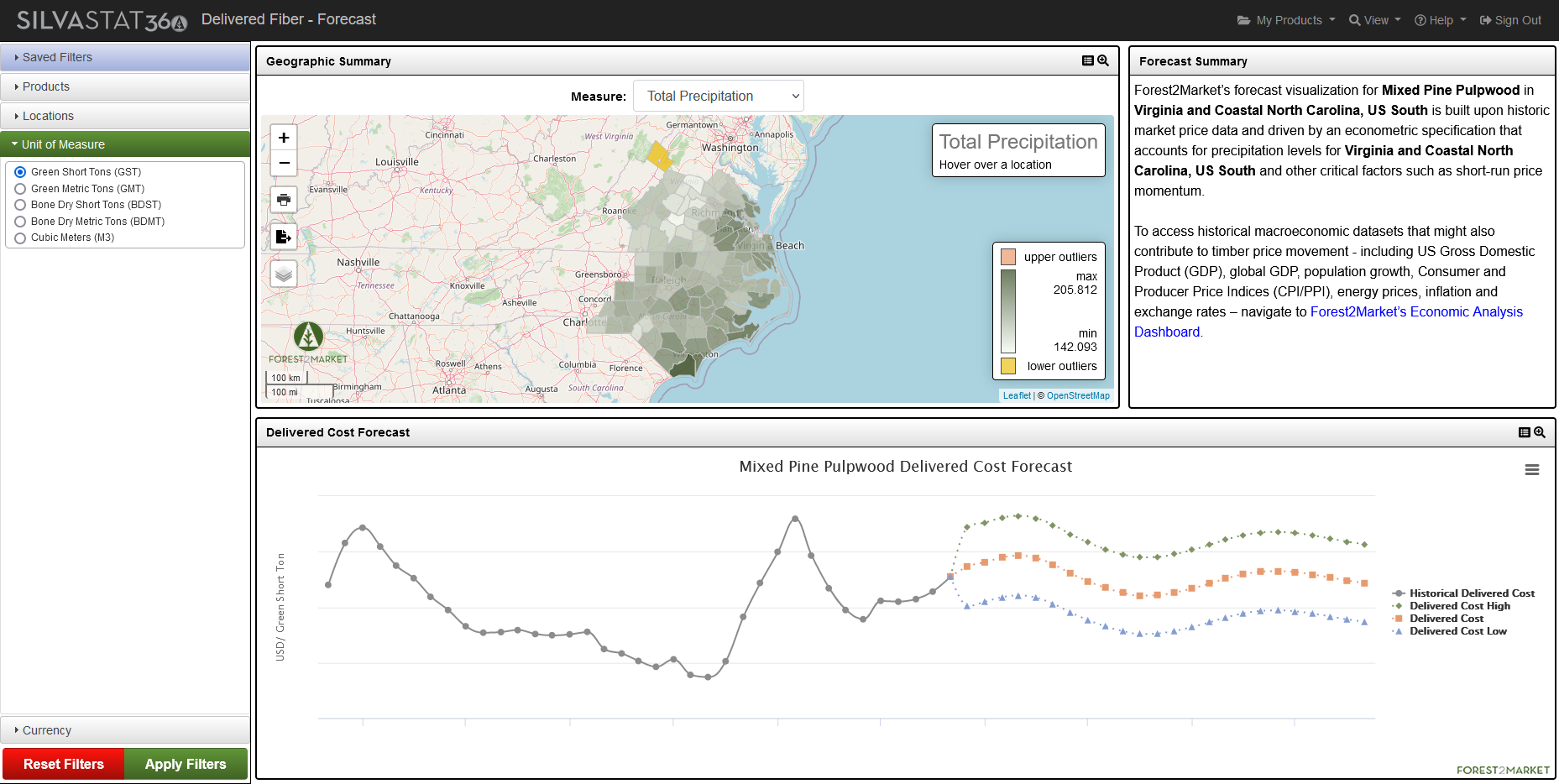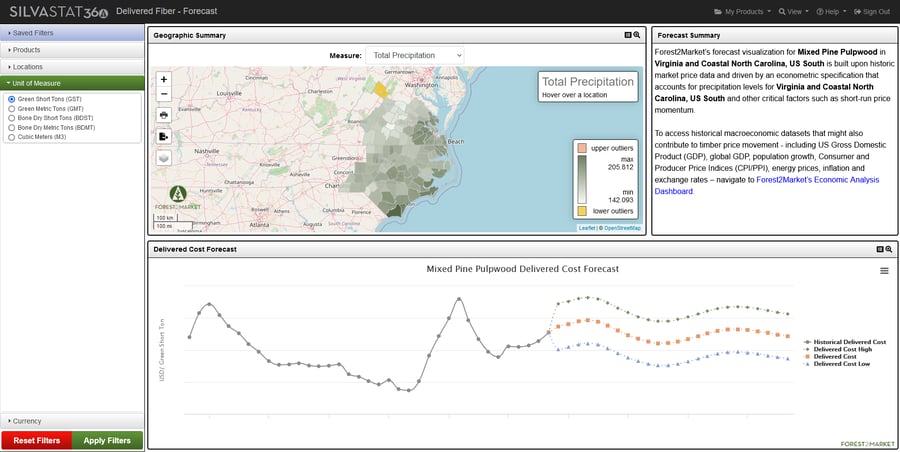2 min read
New Product Spotlight: SilvaStat360 Delivered Price Forecast Tool
Forest2Market
:
January 17, 2022

Since rolling out our groundbreaking SilvaStat360 interactive digital platform in 2017, Forest2Market has continued to develop a series of innovative and analytical solutions for participants in the global forest value chain. The breadth of data available via SilvaStata360 is unparalleled in the industry, and it provides Forest2Market customers with the on-demand data and tools that are most important to their unique business needs.
As we continue to add new features and functionality to the platform, we are pleased to introduce a series of innovative products that are designed to inform and stimulate better decision-making. Our newest interactive visualization includes a Delivered Price Forecast tool for both wood fiber (pulpwood and chips) and logs (sawtimber).
Forest2Market’s Delivered Price Forecast visualization is built upon historic market price data and is available to subscribers in the US South, Western North America, Eastern North America and Brazil.
Importance of Forecasting on a Solid Foundation
Understanding the intricacies that underpin a mill’s delivered wood price and its position, advantages, and disadvantages vs. the market is imperative for the mill’s current success and profitability, and it helps shape decision-making for the future. For subscribers to Forest2Market’s Delivered Price Benchmark service, the new Delivered Price Forecast tool incorporates forecasting scenarios based on the highest-quality transactional data in the forest products industry. By starting the process with a precise starting price based on actual mill and market transactions, the forecast scenarios deliver a greater level of accuracy that result in less variability over time.
Leading wood products facilities purchase in excess of 1 million tons of fiber per year. If these facilities know with a high degree of confidence what they will pay for wood each month for the next 24 months, they can:
- Better optimize wood procurement – both volume and price
- Manage inventory (standing or in the yard) more effectively
- Align mill feedstock and output with raw material price trends
From SilvaStat360’s Economic Analysis Dashboard, subscribers can also access historical macroeconomic datasets that might contribute to timber price movement, including US Gross Domestic Product (GDP), global GDP, population growth, Consumer and Producer Price Indices (CPI/PPI), energy prices, inflation and exchange rates.
Delivered Price Forecast Visualization
The SilvaStat360 Delivered Price Forecast dashboard provides interactive charts that help users visualize the data that correspond to their mill facilities and the larger market. Users can sort by product, location and mill, unit of measure, and currency. The data and visualizations can also be downloaded and exported as images to be used in presentation formats.
In the screenshot below, the map at the top illustrates precipitation data for a particular NC and VA wood basket and the bottom chart displays the delivered cost forecast for pine pulpwood that includes:
- Historical Delivered Cost
- Delivered Cost High Scenario
- Delivered Cost Scenario
- Delivered Cost Low Scenario

Users can also zoom in to further interact with the data, and hover over each point in the chart to get instant forecast costs in each scenario for seamless price comparisons.
With the new Delivered Price Forecast tool, Forest2Market subscribers have even deeper insights into their historic, current, and future delivered wood costs. While supply and demand will always dictate market price direction, improving supply chain efficiencies is the single most effective method to boost profitability. Forest2Market’s proprietary data allows for an unrivaled, comprehensive look at fiber and log markets, providing a precise starting point for forecast scenarios.
The new Delivered Price Forecast tool enables participants in the forest products industry to respond confidently to market changes while assuming a comfortable level of risk. Using a forecasting tool that can maximize return and minimize risk is simply smart business, especially in times of uncertainty.





